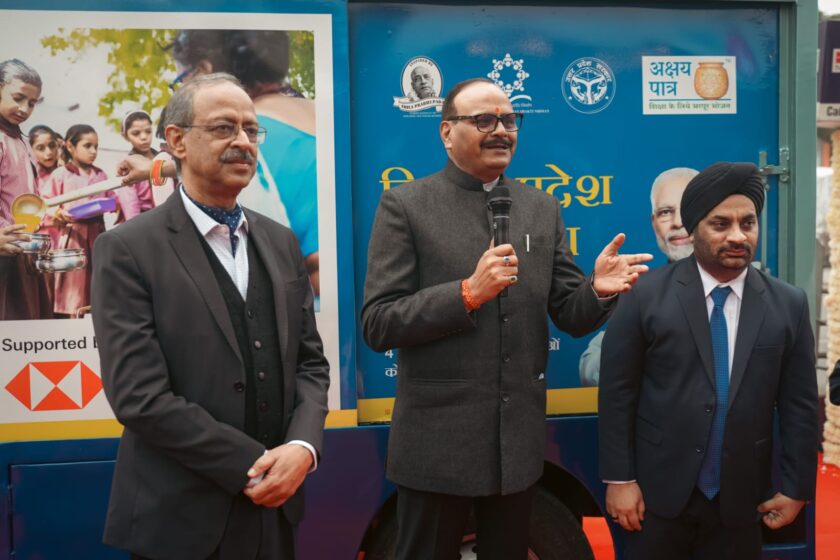Manoj Singh, ex ACS, U.P. Govt, Retd IAS
From scorching summers to festive winters, how climate, farming, and urban growth drive India’s shifting power needs
Lucknow: In May 2024, as the mercury touched 45°C across North India, the country’s electricity demand surged to a record 243 GW—enough to power the entire United Kingdom four times over. Cities like Delhi, Hyderabad, and Lucknow reeled under sweltering heat, with air conditioners humming day and night. Yet by mid-August, the same grid saw demand plunge nearly 20%, as monsoon rains cooled the land and hydropower reservoirs brimmed with fresh inflows.
This seasonal dance of electricity demand is not just about weather. It is a puzzle shaped by farming cycles, festive lights, industrial booms, and now, the growing shadow of climate change. For a nation aspiring to be a $5 trillion economy, understanding these patterns is crucial—to prevent blackouts, optimize renewable energy, and plan smarter infrastructure.
1. Summer: The Peak Power Crisis (March–June)
Summer in India is not just about scorching afternoons—it’s when the nation’s electricity grid faces its sternest test.
-
Urban Cooling Surge: In metropolitan India, cooling is king. Studies estimate that air conditioning accounts for 40–50% of peak summer load in cities like Delhi, Hyderabad, and Gurugram. In 2022, when a prolonged heatwave scorched the country, power demand spiked to 207 GW, forcing load-shedding in 16 states. For residents, it meant dark evenings and powerless fans during the year’s hottest days.
-
Farming Cycles Fuel Demand: In Punjab and Haryana, electricity demand shoots up as farmers prepare fields for the kharif crop. Paddy sowing in May alone pushes Punjab’s grid demand up by nearly 15%, with irrigation pumps running around the clock.
-
Solar Power Cushion: India’s rapidly growing solar fleet provides partial relief. Solar now contributes 12% of summer generation, softening daytime peaks. But as the sun sets, the “duck curve” kicks in—demand surges just as solar supply fades, creating a steep evening shortfall.
📌 Expert Insight: “Every 1°C rise beyond 40°C increases national demand by 3–4 GW—roughly equivalent to powering Mumbai for a day,” notes a 2023 report by the Central Electricity Authority (CEA).
The result is a summer of contrasts—daytime grids buoyed by solar, but evenings plagued by deficit fears.
2. Monsoon: The Hydropower Bonus (July–September)
If summer is about stress, the monsoon offers a seasonal reprieve.
-
Cooling Effect: Across most of India, rainfall slashes AC usage, trimming demand by 8–10%. Yet, in coastal cities like Mumbai, steady humidity keeps cooling appliances running, creating flatter demand curves.
-
Hydropower Resurgence: This is the season when rivers swell and dams overflow. Himachal Pradesh, Uttarakhand, and Karnataka see hydropower output jump by 30% or more, stabilizing the national grid. In August 2023, hydropower alone met 35% of India’s electricity demand, underscoring its importance as a seasonal balancing force.
-
Infrastructure Risks: Monsoon also brings challenges. Landslides and floods disrupt transmission lines and substations. In 2022, Assam’s devastating floods caused blackouts lasting up to 72 hours in rural pockets, highlighting how climate-linked disasters can undo seasonal advantages.
💡 Did You Know? Kerala’s electricity demand actually falls during the monsoon—rains reduce the need for both cooling and irrigation, creating one of the steepest seasonal dips in the country.

3. Winter: Festivals and Farming (October–February)
Winter is a season of dual narratives—festive lights in cities and farm-driven demand in rural belts.
-
Heating Needs in the North: In Jammu & Kashmir, Himachal Pradesh, and Uttarakhand, electricity demand doubles in peak winter months as heaters and geysers run non-stop. For grids designed around cooling loads, this creates a unique seasonal stress.
-
Festive Electricity Spikes: The festive calendar—Diwali, Christmas, and New Year—creates temporary surges. In Mumbai, October 2023 saw a 25% demand spike as decorative lights illuminated streets, shopping malls extended hours, and families indulged in festive consumption.
-
Rabi Crop Irrigation: In Punjab and Uttar Pradesh, Rabi sowing fuels a 10–15% rise in demand. Tubewells hum through winter nights as farmers irrigate wheat fields.
📌 Case Study: In December 2023, Gujarat’s textile mills added extra shifts to meet export orders before Christmas. The result? Industrial power demand in the state rose by 18%—an example of how global market cycles overlap with seasonal domestic demand.
4. The Wildcards: Climate Change and Policy Gaps
While summer, monsoon, and winter follow predictable cycles, two wildcards are reshaping India’s electricity map—climate change and policy shortfalls.
-
Unpredictable Weather: Heatwaves are arriving earlier and lasting longer. Rajasthan’s 2023 heatwave stretched into mid-June, extending peak demand by three weeks. Meanwhile, erratic monsoons mean hydropower reservoirs no longer fill consistently.
-
Coal Dependence and Shortages: Despite growth in renewables, coal remains India’s backbone. In April 2023, a coal stock crisis triggered a 12 GW shortfall, worsening blackouts during one of the hottest summers.
-
The Renewable Challenge: While solar contributes significantly in daytime, the lack of large-scale storage means evening demand gaps remain unsolved. Tamil Nadu, despite its vast solar capacity, faced 6–9 PM deficits in summer 2024.
📌 Expert View: “India needs a two-pronged approach—demand-side management, like incentivizing off-peak usage, and hybrid renewable storage systems to bridge evening gaps,” says Dr. Ashwini Kumar, an energy analyst.
A Call for Smarter Planning
India’s electricity demand is not a uniform curve—it is a jagged rhythm, pulsing with the seasons. Summers stretch the grid, monsoons stabilize it, winters diversify the load, and climate change keeps shifting the goalposts.
The answers, experts say, must be regional and adaptive:
- Punjab’s time-of-day tariffs for farmers, which spread irrigation demand.
- Karnataka’s pumped hydropower storage, which soaks up monsoon surplus.
- Delhi’s pilot programs on rooftop solar plus battery systems.
As India chases economic growth and climate commitments, the challenge is clear: it’s not just about producing more electricity—it’s about producing smarter electricity.
The lights that guide our homes, offices, and factories are more than convenience—they are mirrors of India’s economic aspirations, climate risks, and the resilience of its people. The question now is whether the country can power through its seasonal puzzles with the foresight the future demands.





